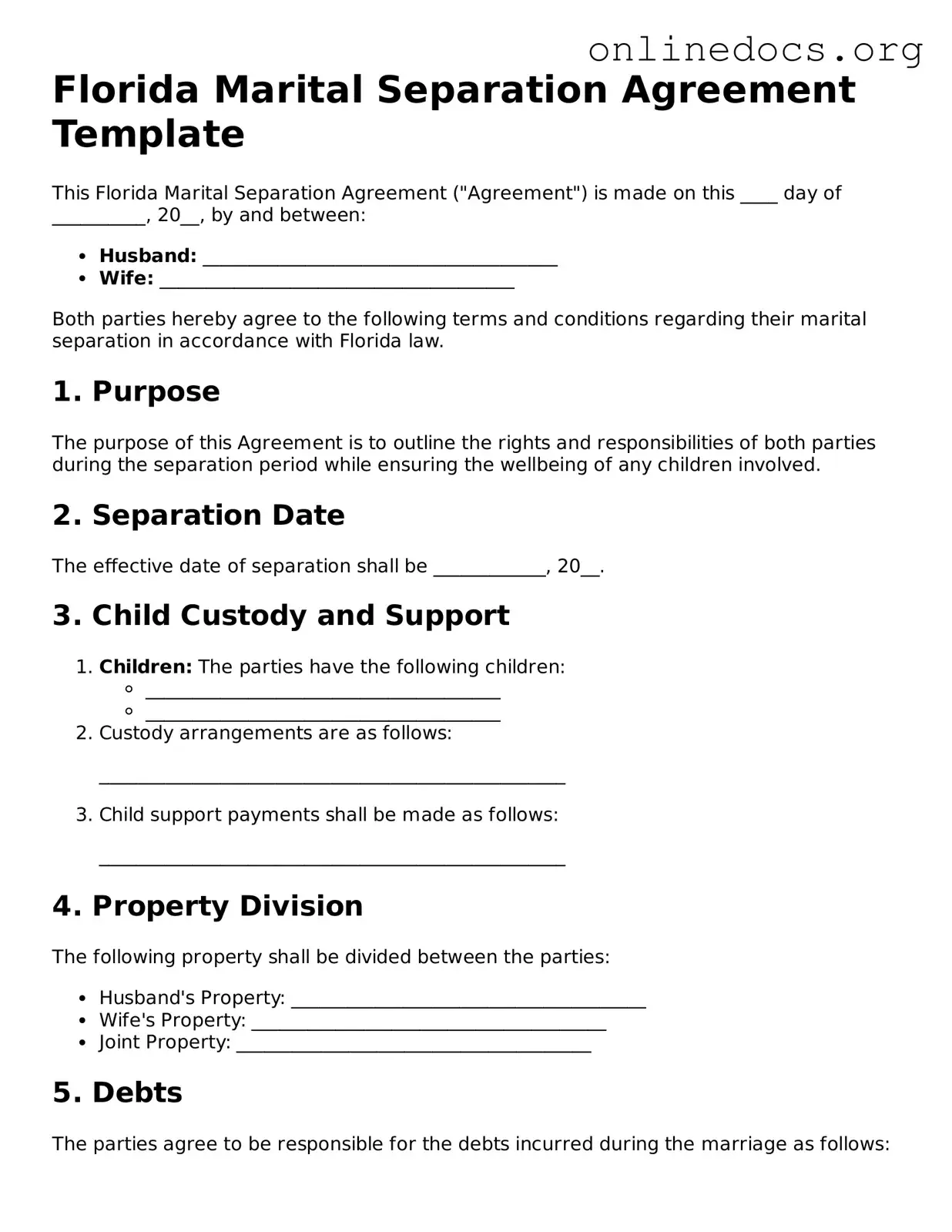The Florida Marital Separation Agreement form is similar to a Divorce Settlement Agreement. Both documents outline the terms of a couple’s separation, including the division of assets, debts, and child custody arrangements. While a Marital Separation Agreement is used when couples decide to live apart without finalizing their divorce, a Divorce Settlement Agreement is executed when the divorce is finalized. Both documents aim to provide clarity and structure to the couple’s new living arrangements.
Another document that shares similarities is the Child Custody Agreement. This agreement focuses specifically on the custody and visitation rights of children involved in a separation or divorce. Like the Marital Separation Agreement, it addresses the best interests of the child, ensuring that both parents have a clear understanding of their responsibilities and rights. It can be included as part of the Marital Separation Agreement or stand alone, depending on the circumstances.
The Property Settlement Agreement is also akin to the Marital Separation Agreement. This document specifically deals with how property and assets will be divided between the spouses. It outlines which spouse will retain ownership of specific items and how debts will be managed. Both agreements aim to minimize conflict and provide a clear roadmap for asset division, ensuring that both parties are on the same page.
A Cohabitation Agreement is another document that bears resemblance to the Marital Separation Agreement. Typically used by couples who live together but are not married, this agreement outlines the rights and responsibilities of each partner. In cases where a married couple separates, the principles in a Cohabitation Agreement can often inform the Marital Separation Agreement, especially regarding shared property and financial obligations.
When navigating the complexities of separation or divorce, it's important to utilize well-structured documents, such as the Employment Verification form, to ensure all legal requirements are met. For example, this form not only serves to confirm employment status but may also play a role in financial disclosures during separation negotiations. For more detailed information, you can visit legalformspdf.com.
The Prenuptial Agreement is similar in that it also deals with the division of assets and responsibilities, but it is created before marriage. This document can set the groundwork for how a couple will handle their finances and property in the event of a separation or divorce. Both agreements emphasize the importance of clarity and mutual understanding in financial matters, although one is established prior to marriage while the other is formulated during or after the marriage.
Lastly, the Separation Agreement is a broader term that encompasses various agreements made during a separation. It can include elements of the Marital Separation Agreement, Child Custody Agreement, and Property Settlement Agreement, among others. This document serves to formalize the terms of the separation, ensuring that both parties have a clear understanding of their rights and obligations moving forward. The flexibility of a Separation Agreement allows couples to tailor their arrangements to their specific needs, similar to the Marital Separation Agreement.
